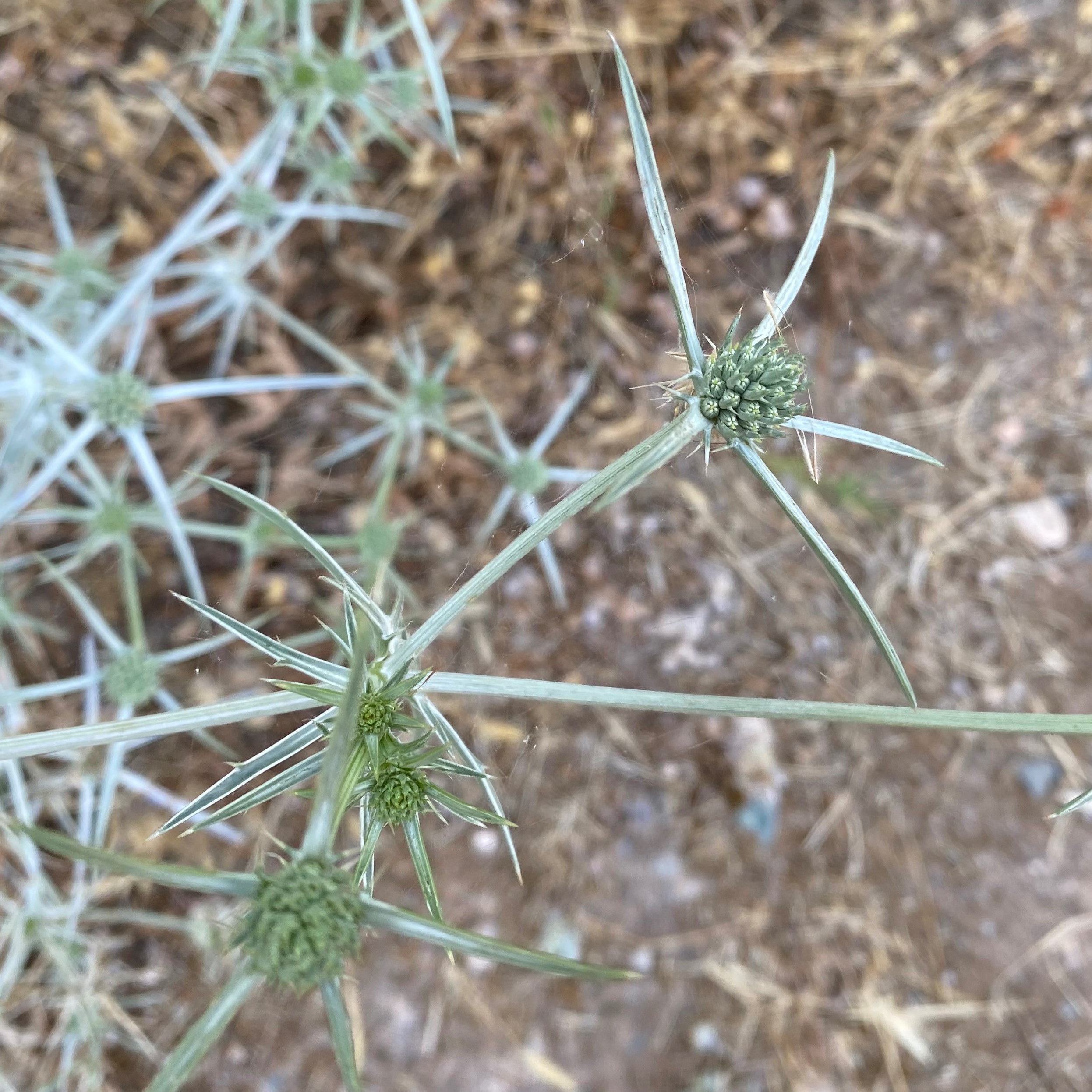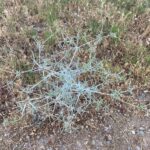Etymology of Eryngium creticum
The Eryngium genus received its name from Eryngium campestre, initially used by the "father of botany," Theophrastus (circa 371 – circa 287 BC), in Ancient Greece. The name of the genus derives from the extremely Ancient Greek word "ἠρύγγιον" [iriggion], diminutive of "ἤρυγγος" [iriggos], of which its etymology is only speculated (at least online). A later meaning of "goat's beard" is hysterogenic and doesn't represent the initial etymology. "Creticum" means "of Creta (island)".
Where is Eryngium creticum native?
Eryngium creticum is native to the Mediterranean basin, including regions like Cyprus, Israel, Turkey, and surrounding countries. It thrives in dry, rocky terrains and coastal environments. The plant’s deep root system allows it to survive in nutrient-poor soils and withstand droughts. Its spiny structure protects it from grazing animals, and its flowers attract pollinators, ensuring ecological success in arid regions.
The plant in Cyprus
There are four Eryngium species in the Cypriot habitat. Eryngium creticum is a common plant in Cyprus. It is encountered almost all around the island (definitely not in the Morfou region), up to an altitude of 600 metres. Its bluish unnoticeable flowers bloom between May and November.
Cypriot names of the plant:
Πάγκαλλος, Ηρύγγιον το κρητικό
What is the ecological role of Eryngium creticum in its natural habitat?
Eryngium creticum plays a crucial role in its native Mediterranean ecosystem. As a drought-tolerant plant, it thrives in arid and rocky environments, often serving as ground cover to prevent soil erosion. It is also an important nectar source for pollinators, particularly bees and butterflies, contributing to the biodiversity and health of local ecosystems. Furthermore, its deep root system helps stabilize the soil and promotes water infiltration, benefiting nearby plant life. In disturbed or overgrazed areas, Eryngium creticum can act as a pioneer species, supporting ecosystem recovery by creating microhabitats for other plants and insects.
Is Eryngium creticum edible, and how is it traditionally prepared?
As a food source, Cypriots up-to-date remove with a knife the young plant of Eryngium creticum from the soil which is up to around 15-18cm in diameter sprayed on the surface of the moisty ground, remove the root and leaves and place it into vinegar to consume it after some days-months. At that time the plant's lower leaves resemble Ranunculus cytheraeus, and as they multiply, they change formation. In the Cypriot dialect, the (young) plant is called "Πάγκαλλος" [Pagallos], from the Ancient Greek word "πάγκαλος" [παν + καλός], which means "wholly good", most likely describing it as a delicacy.
What are the medicinal properties of Eryngium creticum?
Eryngium creticum, commonly known as "wild eryngo," has been traditionally valued for its medicinal properties, particularly in Middle Eastern cultures. This plant is renowned for its anti-inflammatory, antioxidant, and hypoglycemic effects. Traditional uses include its role as an antidote for scorpion stings and snake bites, where extracts from its leaves or roots are applied to neutralize venom and reduce swelling. Scientific studies have supported its hypoglycemic activity, demonstrating significant blood sugar-lowering effects in animal models. Additionally, the plant is used for treating urinary tract infections, kidney stones, and digestive issues due to its diuretic and detoxifying properties. Its rich phytochemical composition, including flavonoids, saponins, and essential oils, contributes to these therapeutic effects.



